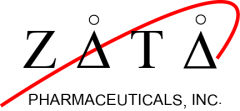Four decades ago, the cofounder of ZATA, Dr. Paul C. Zamecnik, known as the “father of Antisense Therapy”, opened a new chapter in Medicine by showing, together with Mary Stevenson, that oligonucleotides can be used to selectively modulate the expression of target genes (Zamecnik & Stephenson, PNAS, 1978, 75, 280-284). This idea opened endless new possibilities for the treatment of diseases, or for biological research. Yet, the practical realization of these possibilities turned out to be difficult: Natural oligonucleotides do not readily penetrate inside the cells, where there action is, and they have a very short circulation time in vivo, being quickly broken down or excreted by the kidneys. A lot of research has been devoted to the improvement of the properties of natural oligonucleotides through modifications.
The successor of Dr. Zamecnik and current president of ZATA, Dr. David R. Tabatadze, proposed the idea of self-neutralizing oligonucleotides (ZONs) which reduces the problem of low cellular uptake and improves the stability of synthetic oligonucleotides. That idea has been materialized by the intensive work of ZATA’s R&D team and the financial support of the NIH.
The unique innovations behind ZATA’s ZON platform enables such key feature as significantly improved unassisted cellular uptake, improved metabolic stability and circulation time, improved targeting specificity, good solubility, and lack of non-specific aggregation and cytotoxicity. This highly flexible technology is compatible with most of the existing oligonucleotide modifications and can be tailored and optimized for any particular target or type of application (steric block antisense, RNase-H based, siRNA and others), and have the potential to revolutionize the oligotherapy field and expand its application to many new areas.
For closer evaluation of properties and features of ZON platform please click on the link below:
ZATA’s Novel Self-Neutralizing Oligonucleotides with Enhanced Cellular Uptake
